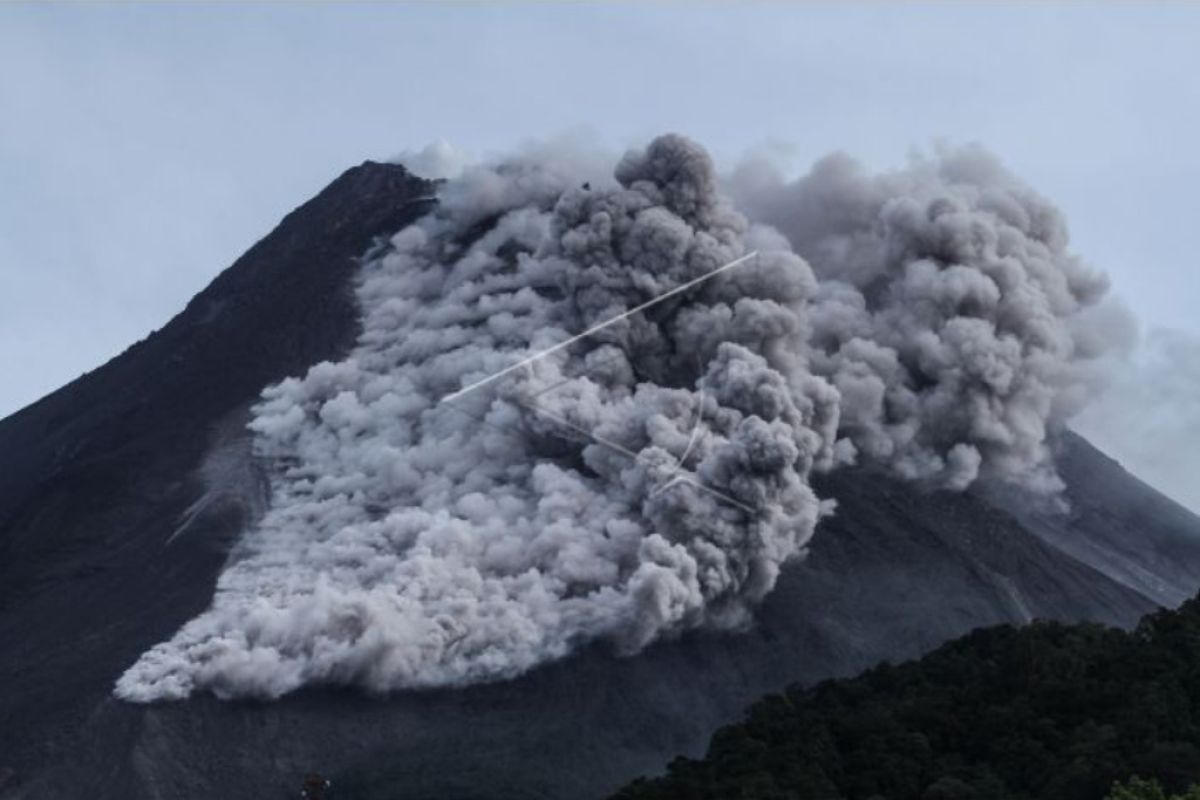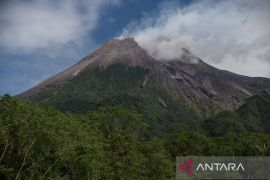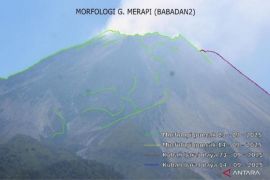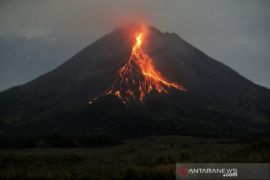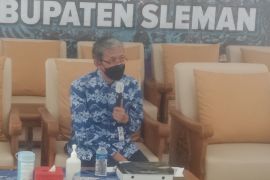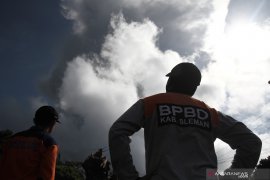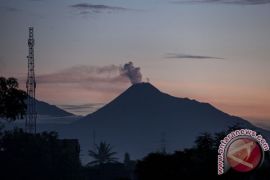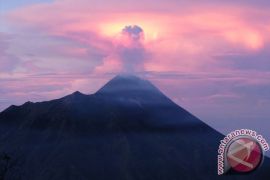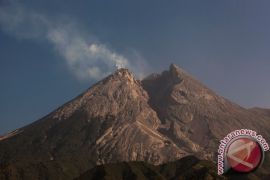The clouds had a maximum gliding distance of 1,500 meter southwestward, or in the upstream direction of Boyong and Krasak River.
“Due to the hot clouds, it was reported that there had been some ash rain of light intensity in a number of villages in the sub-district of Tamansari, Boyolali district, and Boyolali city,” said head of the Geological Disaster Technology Investigation and Development Hall (BPPTKG), Hanik Humaida, in a statement received here on Wednesday.
He asked the people to remain prepared for disruptions due to the emission of volcanic ash.
Based on the observation period of 6 a.m. to 10 a.m. local time, the clouds were first ejected at 6:03 a.m., with a 40 mm amplitude and 83 seconds duration, as recorded in the seismogram. The sliding distance was estimated to be 800 meters to the southwest, with the column height washed by the wind to the eastward slope.
The second hot cloud glided out at 6:08 a.m., Western Indonesia Time, with an amplitude of 43 mm and a duration of 111 seconds, as recorded on the seismogram. The hot cloud rolled into Karasak and Boyong River with a sliding distance of one thousand meters. The column height was swept by the wind to the east slope.
Hot clouds were again emitted at 6:21 a.m. local time, with an amplitude of 45 mm and a duration of 117 seconds and a sliding distance of one thousand meters to the southwest.
The next hot cloud was ejected at 6:28 a.m. local time, with an amplitude of 43 mm and a duration of 112 seconds, and a sliding distance of 1,200 meters to the southwest.
Related news: Public advised caution as Mount Merapi ejects hot clouds
The next volcanic cloud emission was recorded at 6:53 a.m., with an amplitude of 39 mm and a duration of 125 seconds. The sliding distance was observed to be as far as 1,200 meters to the southwest, or Krasak and Boyong River.
The sixth emission was recorded on the seismogram at 7 a.m., with an amplitude of 35 mm and a duration of 121 seconds, and a sliding distance of 1,200 meters.
The seventh hot cloud avalanche was seen at 7:29 a.m., with an amplitude of 50 mm and a duration of 139 seconds, and a sliding distance of 1,300 meters.
The next avalanche was recorded at 8:11 a.m. WIB, with an amplitude of 30 mm and a duration of 197 seconds, and a sliding distance of 1,500 meters.
The ninth emission was recorded at 8:22 a.m., with an amplitude of 30 mm and a duration of 127 seconds, and a sliding distance of 1,500 meters.
The volcano spewed more hot ash at 8.30 a.m., with an amplitude of 34 mm and a duration of 134 seconds, and a glide distance of 1,200 meters.
It ejected ash clouds again at 9:08 a.m., with an amplitude of 32 mm and a duration of 126 seconds, and a sliding distance of 1,200 meters.
The next emission was reported at 9:19 a.m., with an amplitude of 30 mm and a duration of 113 seconds, and a sliding distance of 1,200 meters.
Related news: Mount Merapi belches hot cloud up to 600 meters
The thirteenth hot cloud avalanche rolled out at 9:31 a.m., with an amplitude of 20 mm and a duration of 112 seconds, and a sliding distance of one thousand meters.
The final emission occurred at 9:42 a.m, with an amplitude of 15 mm and duration of 90 seconds. The sliding distance was 900 meters to the southwest.
The BPPTKG maintained the status of Mount Merapi at Level III, or on alert, with the current potential hazards in the form of lava avalanches and hot clouds in the south-southwest sector, including the Boyong, Bedog, Krasak, Bebeng, and Putih rivers, with a maximum distance of five kilometers.
Meanwhile, the agency cautioned, should an explosive eruption occur, the ejected volcanic material could reach a radius of three km from the summit. (INE)
Related news: Mount Merapi spews hot lava for 36 times
Translator: Luqman Hakim/Aria Cindyara
Editor: Yuni Arisandy Sinaga
Copyright © ANTARA 2021
